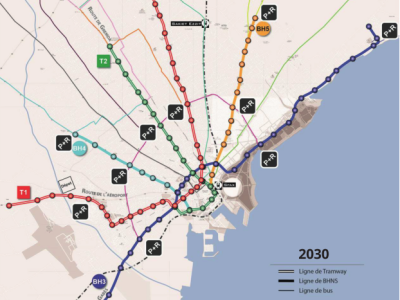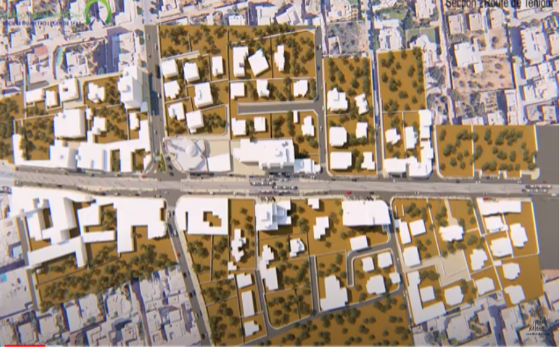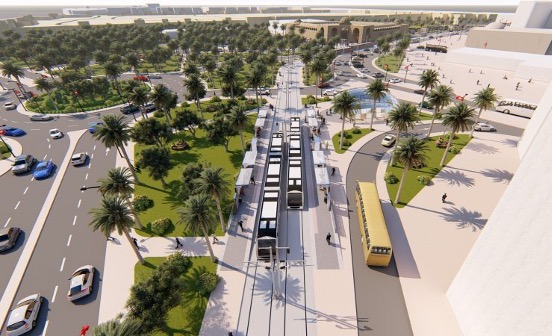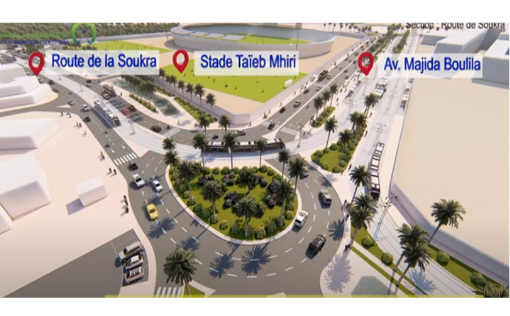
Close

Approach Words: Integrated City, Sustainability, Urban Livability
Public Policy Instruments: Financial Mechanism, Physical Intervention, Planning
The Sfax Light Rail is a major public transportation project in the metropolitan region of Sfax,1 with a population of 500,000 inhabitants.2 As part of the Grand Sfax 2030 development strategy,i the project aims to enhance the multimodal transport system, accommodate the growing mobility needs and minimize traffic and environmental impact of vehicles.3
The Sfax Light network will span 11 kilometers, with more than 50% of the routes falling within the administrative boundaries of the municipality of Sfax.4 The system consists of five transit lines, including two light rail lines (T1 and T2) and three Bus Rapid Transit (BRT) lines (BH3, BH4, and BH5).5

Title: Sfax Metro Lines
Source: Click Here

Title: Top view showing the line T1 at Teniour Road
Source: Click Here

Title: 3D View showing t1 and BRT lines at Place de Martyres
Source: Click Here

Title: 3D showing intersection of T1 and T2 at Route de la Soukra
Source: Click Here
Light Rail Lines
Bus Rapid Transit (BRT) Lines
The project also features a multimodal hub and 12 park-and-ride lots, with each lot offering between 100 and 200 parking spaces, depending on the location.13

Owner/Developer (Public)

The project will be implemented in four phases:14
The project was initiated and will be developed by SMLS – Société du Métro Léger de Sfax,19 a public transport company created in 2015 to develop the public transport network in the city.20 Between 2011 and 2013, the French company Egis, in collaboration with the local company I2E, carried out the feasibility study for the transport network. The initial and comprehensive design studies for line T1 of the project were undertaken by SYSTRA alongside the local consulting firm STUDI International. The funding for both sets of studies was provided by the European Investment Bank (EIB).21
The total cost of the project is estimated at $882 million.22 It will be co-funded by the State and private financing companies in the form of loans.23
Project Link
https://www.facebook.com/SMLSFAX
Endnotes
References